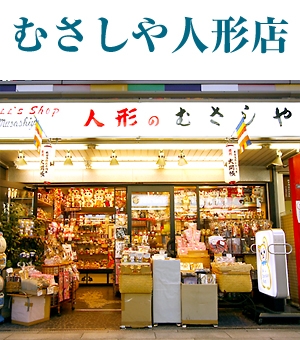About two weeks ago I found a nice black manekineko (lit. beckoning cat) at a nearby department store. I had never been interested in those ceramic cat figurines that are believed to bring you luck, but my eyes were glued on that particular cat for some reason I can't explain.
I came back home without buying it. Usually I lose my desire to shop while sleeping at night, but the next morning I still wanted it and even regretted not having bought it. When I went back to the store and saw it sitting on the shelf, I was very relieved.
This is the lucky cat I bought for the first time in my life. Do you think it is cute or bizarre?
As I already mentioned before, it is widely believed that the right paw raised brings you good luck, while the left paw raised will invite in customers.
The colors also have meanings: white cats represent good luck, black ones good health and yellow (or gold) cats fortune. Nowadays there are also red, purple, green and pink cats, but I don't think these new colors are very popular yet.
Since this lucky cat came to my home, nothing lucky has occurred yet, but he brought an another manekineko.
Last week I visited my old parents living not too far from my home. When I told my mother that I had bought a manekineko, she said, "Actually, we have an old manekineko someone gave it to us decades ago. It is rather big and takes up space. We'd like to get rid of it, but can't throw it in a trash can because it is a talisman. Please take it home."
Then she brought a white manekineko with a huge head and big eyes from the lumber room. I wasn't particularly attracted to this cat, but my mother persistently persuaded me to take it, and I gave in. Sigh... Mom, it is a bit too big (30cm tall) .
This is the photo of my second manekineko. Produced in Tokoname, one of the main pottery towns in Aichi Prefecture, this type is "the manekineko" most Japanese would imagine. Don't worry, kitty. I won't throw you away, so bring me good luck!
Come to think of it, manekineko may be a nice souvenir. There is a wide variety in shape, style, size and price. Recently there are even battery-powered manekineko that move the paw slowly. I'm sure you'll probably find the one you like.
Where can you buy manekineko?
Asakusa area (Tokyo)

Musashiya: Located on a Nakamise shopping street that leads to Kaminari-mon (the famous gate of Sensoji temple with a huge lantern) to the main hall of the temple. Open daily, 11 a.m.-7 p.m. , tel: 03-3841-5451 Asakusa's Sensoji-temple is a very famous touristic spot you should not miss. Even if you cannot find anything that pleases you, you can take a nice stroll in this traditional area.


Orner Koide: Located in Kappabashi, near Asakusa. address: 3-1-15 Matsugaya, Taito-ku, Tokyo, tel: 03-3843-2571, open 10 a.m.-5:30 p.m., closed Sun. & holidays. They are dealing with not only manekineko but other talismans. You'll probably find funny stuffs there. Their store items are also avilable through the Internet http://www.rakuten.ne.jp/gold/manekineko-orner/ (Japanese only)
Yanaka (Tokyo)


Kaiun Yanakado: Address: 5-4-3 Yanaka, Taito-ku, Tokyo, tell: 03-3822-2297, Open caily, 10:30 a.m.-5:30 p.m., 6 minutes on foot from Sendagi Station (Exit No. 1) on the subway Chiyoda Line. Sales point: Located in the lovely Yanaka town, less touristy than Asakusa. If you visit there in cherry blossom season (early April), you can enjoy nice flower viewing at a nearby Yanaka cemetery (don't worry, there's no spooky atmosphere).
Kyoto
Hyotanya075-561-81: Located in Kyoto, on the well-known Sannen-zaka street that leads to Kiyomizu Temple. Many hyotan (gourds) are hung at the store front. Address: 3-317 Kiyomizu, Higashiyama-ku, Kyoto. You can stop by there on the way to (or from ) Kiyomizu Temple, one of the must-not-miss spots in Kyoto.
Seto City, Aichi
Omodakaya: Located in Seto, one of the major pottery tows in Aichi Prefecture. Address: 3 Yakushi-cho, Seto City, Aichi, tel & fax: 0561-87-1700, open 10a.m.-5 p.m., closed Tuesdays, year-end and new year's holidays. Next to the shop, is Manekineko Museum, where thousands of valuable maekineko are displayed. You can also make your own cat by painting pre-made ceramic figurines.


はい、ここからは日本語で。
最近、近くのデパートで黒い招き猫を買いました。
最近 (さいきん) recently
招き猫 (まねきねこ) beckoning cat, lucky cat
今まではそんなに招き猫に興味がなかったのですが、一目見て、欲しくなってしまったのです。
興味 (きょうみ) interest
一目 (ひとめ) a single glance
欲しい (ほしい) to want
招き猫は江戸時代から作られるようになった「福を招く」と言われている置物です。
江戸時代(えどじだい) Edo Period
福 (ふく) luck
招く (まねく) to invite, bring
置物 (おきもの) figurine
右手を上げているのは福を、左手を上げているのは客を招くと言われています。
右手 (みぎて) right paw (or hand)
左手 (ひだりて) left paw (or hand)
客 (きゃく) guests, customers
今はさまざまな色の招き猫があって、それぞれ意味が違うそうです。
色 (いろ) color
意味 (いみ) meaning
違う (ちがう) to differ, vary
白猫は招福、黒猫は無病息災、黄色、または金色は金運アップ。 最近では緑、赤、紫、青などの招き猫も作られるようになってきました。
白猫 (しろねこ) white cats
招福 (しょうふく) bringing luck
黒猫 (くろねこ) black cats
無病息災 (むびょうそくさい) safety and good health
黄色 (きいろ) yellow
金色 (きんいろ) gold
金運 (きんうん) luck with money
緑 (みどり) green
赤 (あか) red
紫 (むらさき) purple
青 (あお) blue
いろいろなサイズ、値段がありますので、お土産にどうでしょうか?
値段 (ねだん) price
お土産 (おみやげ) souvenir


No comments:
Post a Comment